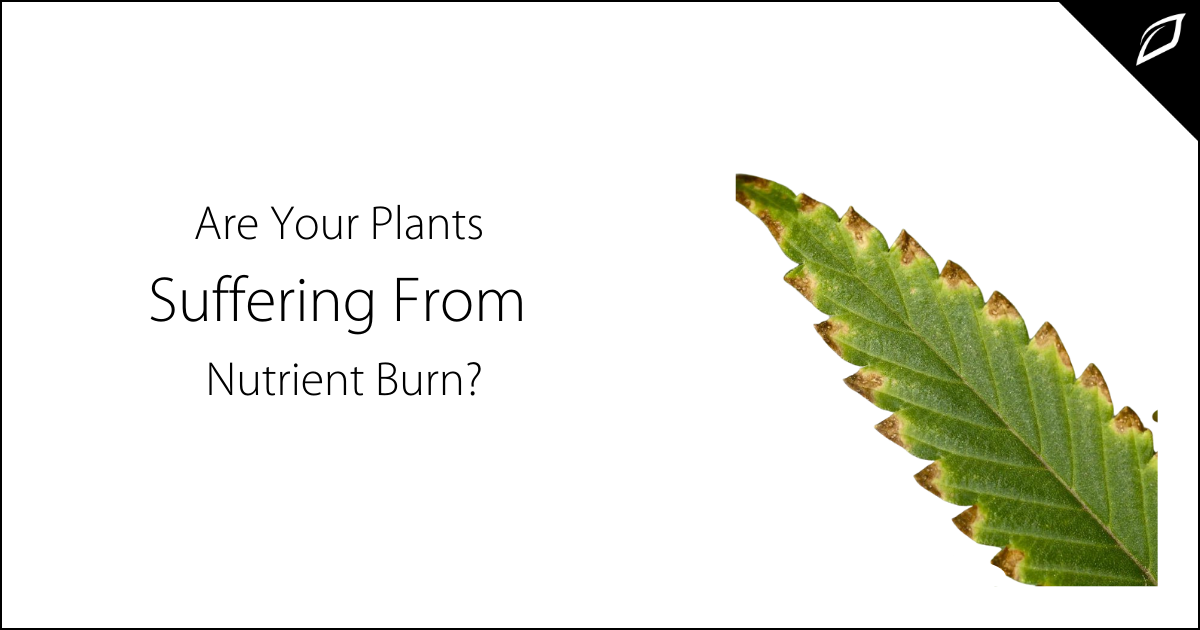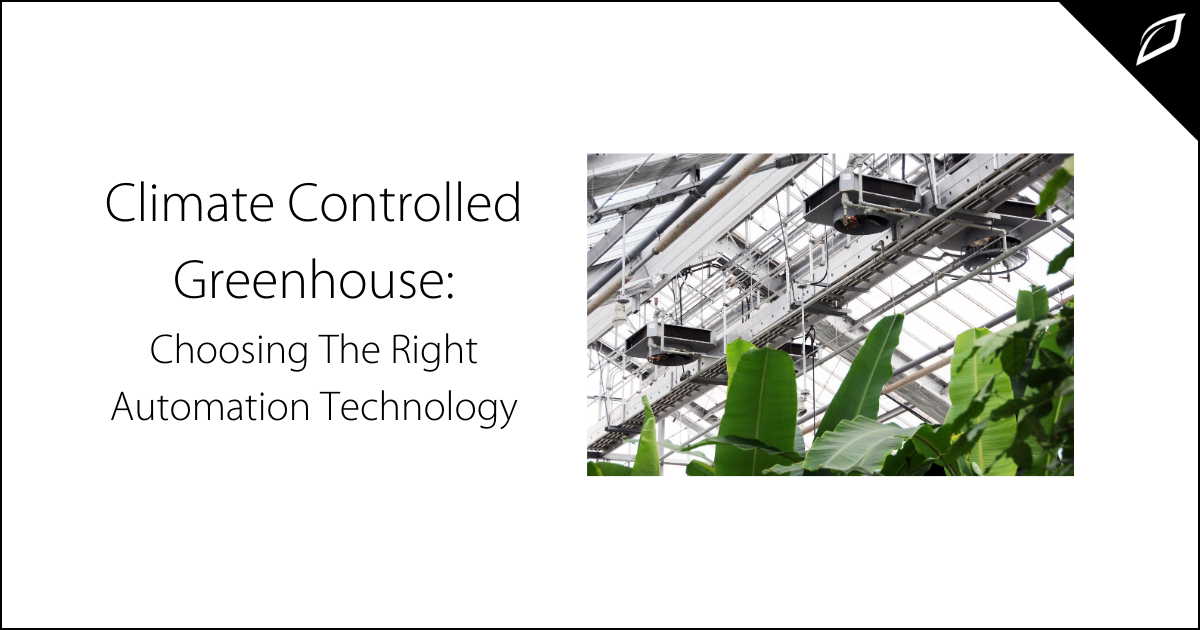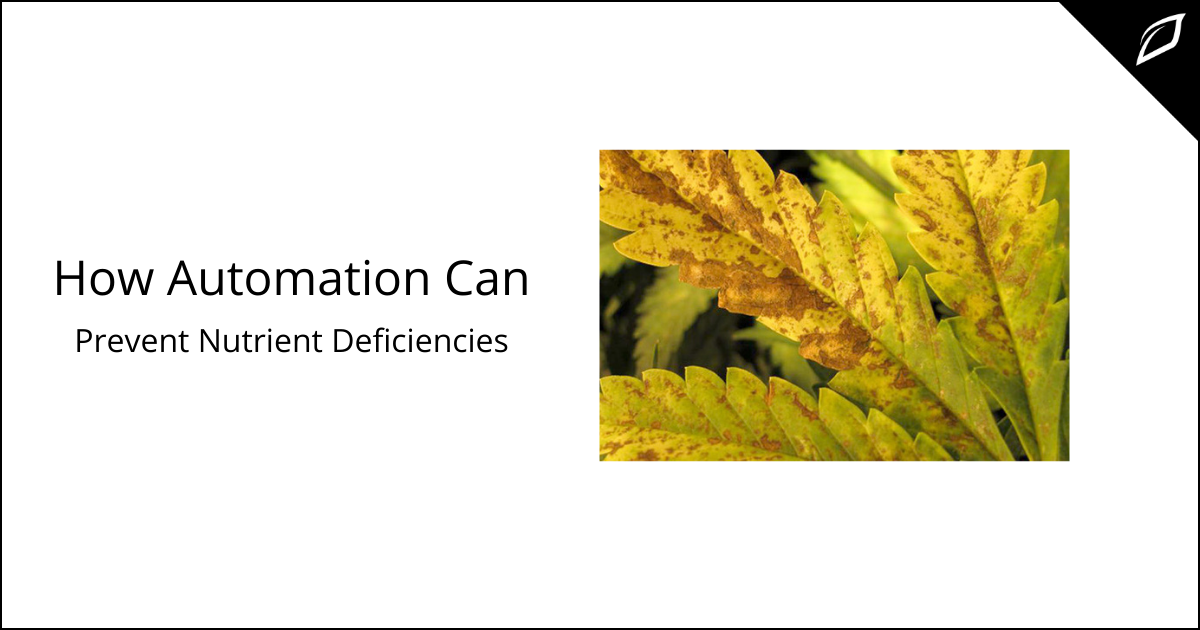Are Your Plants Getting Too Much Light?
Too much of anything can be a problem. Light is no exception, and a thoughtful grower needs to be strategic about the placement and strength of light...


Nutrient Burn – How to Detect Overfertilization and Nip it in the Bud
One common problem that many indoor growers run into is the leaves of their plant's browning, curling, and drying out around the edges. The most likely cause is nutrient burn.
While nutrient burn can sneak up on even the most experienced growers, it can be something to consider if you're new to fertigation. Damage from nutrient burn isn’t reversible, but luckily, the apparent symptoms it produces mean it can be caught relatively quickly and stopped before any further damage occurs.
What is nutrient burn?
Nutrient burn is damage caused by over-fertilization. Plants need plenty of nitrogen and smaller amounts of potassium, calcium, and other nutrients.
Plants don’t have a mechanism to deal with “overfeeding,” and so when plants are fed more nutrients than they can handle, they get sick.
Several reasons it might happen, include unrelated illnesses or pests infecting the plant. It could also be the result of an environment that’s too nutrient-rich. In any case, a plant receiving an overabundance of nutrients will start to suffer from nutrient burn, and, left unchecked, the consequences can be devastating.
Nutrient burn can cause root damage, but the most prominent and most significant damage happens at the leaves. That’s because the browned, scorched areas of leaves suffering from nutrient burn can’t be used to absorb light, and in turn, can’t contribute to the photosynthesis that keeps the plant alive and healthy. That’s why it’s so important for growers to understand that nutrients are just one part of a balanced system, and that trying to force growth through over-fertilizing actually hinders growth by throwing the system out of balance.
What are the symptoms of nutrient burn?
Plants that are suffering from nutrient burn may show symptoms in different ways. Depending on the symptom, it's almost impossible to determine the specific nutrient a plant is receiving too much of.
Early warning signs:
Some early warning signs can alert growers to a buildup of nutrients in the plant before burning. Those warning signs include:
Nutrient burn symptoms start at the tips of the leaves because, as excess nutrients build up, the plant attempts to pass them along, and the leaf tip is the furthest that they can go. It’s essential to keep a close eye on changes to a plant’s leaf tips to ensure nutrient burn is detected as early as possible.
Symptoms to worry about:
As nutrient burn progresses, it’ll move from the tips of the leaves back and inward. It’s at this point that action must be taken to maintain a healthy plant because nutrient burn left unchecked will continue to progress until entire leaves die and drop off.
Symptoms of advanced nutrient burn include:
While some or all of these symptoms will be present in a plant suffering from a nutrient burn, curling leaves are often an indication of an overabundance of nitrogen specifically. As soon as these more advanced symptoms are recognized, growers must isolate the nutrient burn and fix the source of the over-fertilization to prevent further damage.
How can nutrient burn be resolved?
The good news is that when nutrient burn is caught early, it can be fixed before causing any significant damage, allowing the plant to resume healthy growth.
Cut all losses:
The first step to remedying nutrient burn is to remove the parts of the plant that have been affected. Nutrient burn can’t be reversed, and any leaves or buds that have already yellowed or browned are never going to be green again. Snipping off any damaged leaves and buds will prevent parts of the plant that have already been injured or died from rotting and causing further damage.
💡--For tips on snipping, topping and fimming CLICK HERE! --💡
Flush out the growing medium:
Before more balanced fertilization can be applied, the overabundance of nutrients already built-up need to be flushed out. In a hydroponic setup, that entails emptying all reservoirs and filling them up with pH-balanced water. That water should be run through the system for at least 24 hours, with the system’s electrical conductivity (EC) levels being checked daily until the proper fertilizer levels are reached.
In a soil-based growing environment, flushing out the excess nutrients means heavy irrigation with pH-balanced water. Growers can only heavily water their plants, allow the water to run off through the potters, and then repeat until the runoff measures in a healthy range with a total dissolved solids meter.
Adjust the source:
Finally, growers need to isolate the source of the over-fertilization. In soil-based environments, growers should ensure the medium they’re using isn’t too “hot” – like fresh manure or artificially nutrient-enriched soil.
In a hydroponic environment, growers should dial back the concentration of their fertilizers. If using prepackaged mixtures, growers can over dilute their solution to a lower level than the manufacturer’s recommendation. Growers mixing nutrients by hand should employ an EC meter to ensure that their mixtures haven’t been accidentally over-concentrated and that EC levels fall in line with what their previously nute-burned plants need.
Lighting should also be checked to ensure plants aren’t being underlit, as a plant getting less light generally won’t require the same level of nutrients. In that case, nutrient burn is a symptom of a lighting problem, and adjusting light levels will unlock additional nutrient capacity and better growth.
Different crops may respond differently to the same nutrient mix, and sometimes even individual plants will require special attention. The key for growers looking to keep their crops healthy and to maximize growth is to continually monitor their grow environments and to make adjustments based on the signs their plants give them.

Too much of anything can be a problem. Light is no exception, and a thoughtful grower needs to be strategic about the placement and strength of light...

Choosing the right automation technology. The modern greenhouse utilizes technology to automate many daily tasks associated with a bustling grow...

Nutrient deficiency in plants can impact your bottom line. Delivering the right nutrients at the right time can make or break your grow operation....